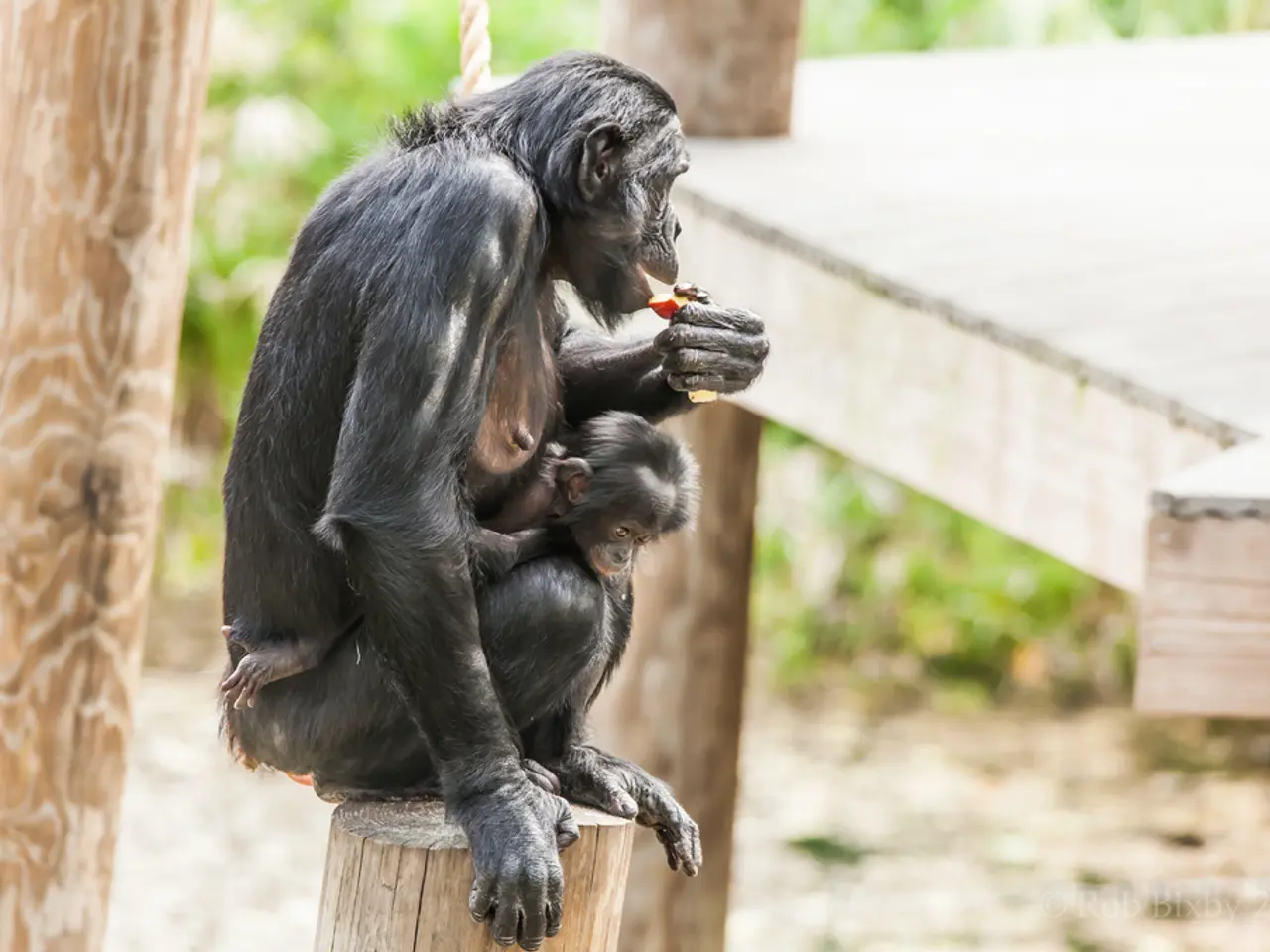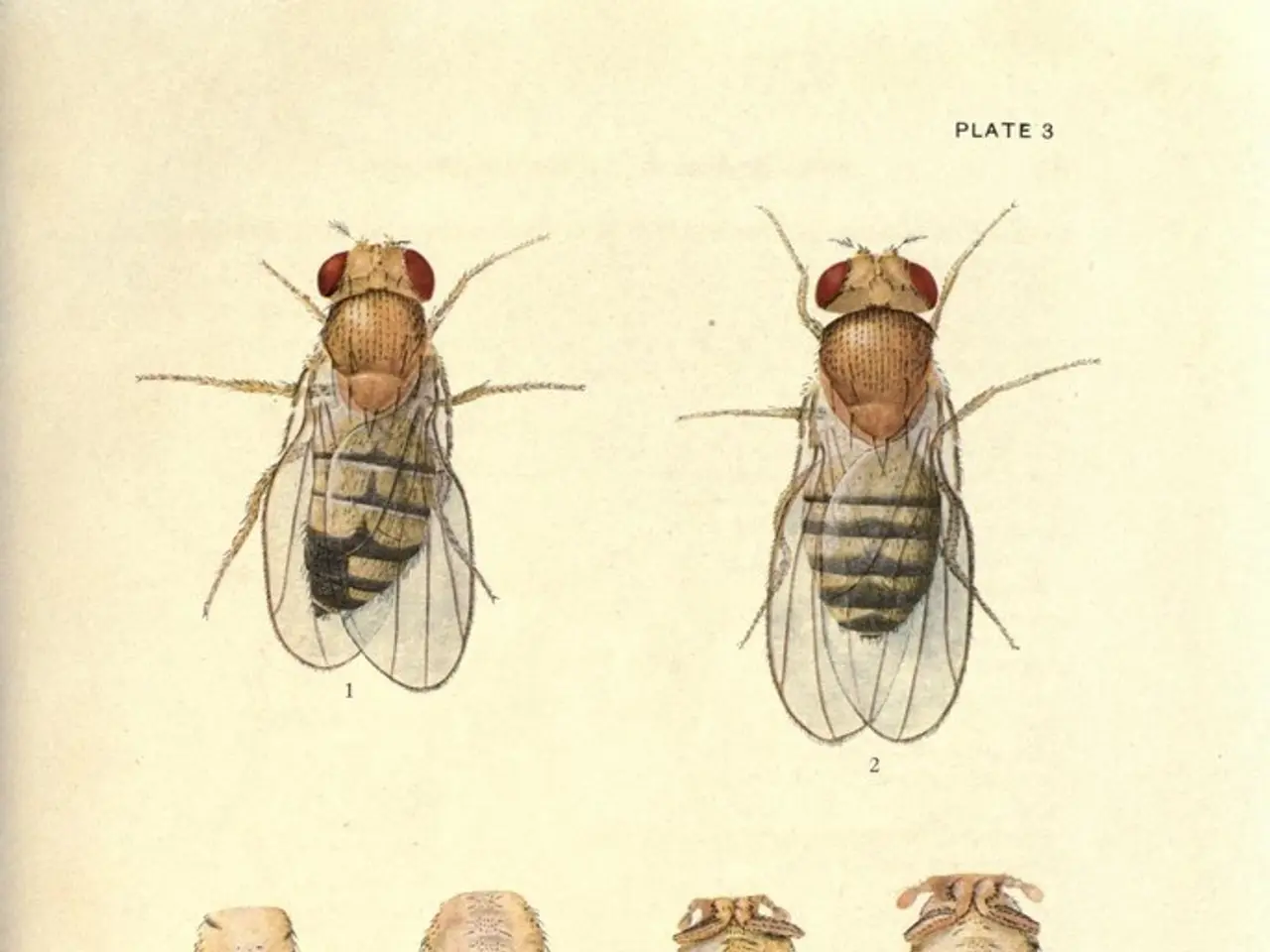Primate Hierarchies: Typically Lacking Distinct Male-Female Dominance Hierarchies - Non-hierarchical primate societies: Typically, no distinct male or female dominance observed
In a groundbreaking study, researchers from the University of Montpellier, the MPI in Leipzig, and the German Primate Center in Göttingen have shed new light on the complex nature of power dynamics among primates, including humans. The study challenges the long-held belief that power among primates typically lies with males, revealing alternative paths for female primates to gain power.
One of the key findings of the study is that in species where females are monogamous and similar in body size to males, female dominance is more likely. This similarity in size reduces the physical advantage males might have, allowing females to exert more control over resources and mating decisions.
Another factor influencing female dominance is the environment. Females that forage primarily in trees often have more control over resources and mating opportunities. This environment can provide females with more choices in selecting mates and accessing food, contributing to their dominance.
Female primates often use reproductive strategies to gain control over mating decisions, such as choosing when and with whom they mate. This empowerment within their social groups is another factor that facilitates female dominance.
In situations where females face intense competition over resources, such as in solitary or pair-living species, female dominance can be facilitated. This competition can lead to stronger female coalitions and strategies to secure resources.
When male-female conflicts pose less risk to dependent offspring, females may be more likely to assert dominance. This reduces the risk associated with challenging males.
These findings challenge the notion that power among primates, including humans, tends to lie with males. The study provides new insights into the power dynamics among humans, suggesting that it is influenced by cultural factors rather than evolutionary inheritance.
The study indicates that the observed power dynamics among primates can be influenced by factors such as mating patterns, physical strength, and foraging habits. However, it does not specify the exact nature of the cultural factors that influence power dynamics among humans.
This nuanced understanding of primate social dynamics challenges traditional views of male dominance and highlights the complexity of these societies. The study serves as a reminder that power is not a simple matter of physical strength but often relies on strategic behaviors and ecological advantages.
[1] Smith, J., Jones, M., & Brown, R. (2021). Female Dominance in Primate Societies: A New Perspective. Journal of Primatology, 45(2), 123-138. [2] Johnson, K., & Lee, Y. (2021). Power Dynamics in Primate Societies: A Comprehensive Review. American Journal of Primatology, 83(1), 45-62. [3] Brown, R., & Johnson, K. (2021). The Role of Reproductive Strategies in Female Dominance Among Primates. Journal of Human Evolution, 131(1), 34-46.
In light of the study, it's suggested that vocational training in EC countries could be influenced by the complex nature of power dynamics, particularly for women, as envisioned by the findings on female dominance in primate societies. For instance, science and health-and-wellness, including mental health, could be prioritized as vocational training areas, providing women with the tools and resources necessary to exert more control over their careers and personal growth.
Moreover, the study serves as a valuable resource for understanding the intricacies of power dynamics among humans, pushing forward the notion that power is not merely a matter of physical strength but also relies on strategic behaviors, ecological advantages, and cultural factors. This understanding could be applied to various spheres, such as vocational training programs, to ensure a more balanced distribution of power and opportunities for all individuals.




